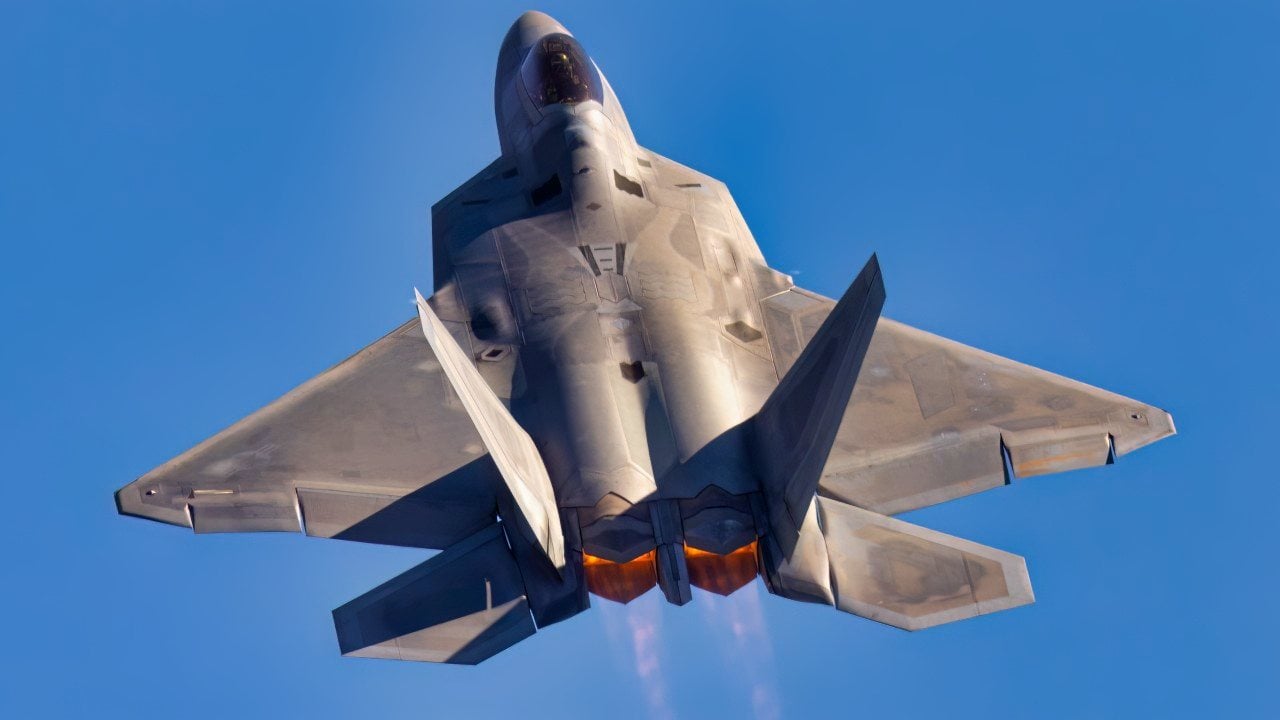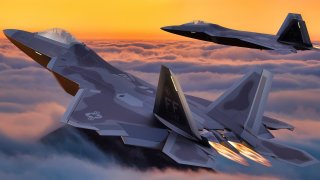F-22: Does this Video Prove the Raptor Is the World's Best Dogfighter?
The F-22 was designed to be the world’s pre-eminent air-superiority fighter, meaning it was meant to be the world’s best dogfighter. The design choices and performance outcomes allowing the F-22 to outpace its competition in the air are suggested in aerobatic demonstrations.
The Lockheed Martin F-22 Raptor is an amazing machine – a point this video makes clear. In the video, taken at the famed OshKosh Airshow a few years ago, two F-22s perform a variety of flybys and maneuvers. Now, the F-22, which cost over $100 million dollars per unit and is no longer in production, is flown more conservatively at airshows than cheaper, more readily available fighters such as the F-15 and F-16. You’re not going to see F-22s in the USAF Thunderbirds anytime soon.
But even while flown somewhat conservatively, the grace and power of the F-22 is fully apparent in the Oshkosh video and, indeed in all F-22 public demonstrations. The U.S. Air Force has been publicly demonstrating the F-22 since 2007, performing power loops, split and tailslides, high-speed passes, and dedication passes.
In all, the F-22 has been demonstrated over 250 times. If you have the means, I highly recommend you take the opportunity to see an F-22 demonstration.
F-22: Top Dog
The F-22 was designed to be the world’s pre-eminent air-superiority fighter, meaning it was meant to be the world’s best dogfighter. The design choices and performance outcomes allowing the F-22 to outpace its competition in the air are suggested in aerobatic demonstrations. The jet accelerates and decelerates seemingly without friction. The control inputs seem to register smoothly, with exacting precision.
There’s really nothing quite like it. Not even the newer F-35, America’s other fifth-generation fighter, moves with such lithe athleticism or latent power. The F-35 was created to be a utilitarian, exportable multi-role fighter, renowned for its data-sharing and network connectivity, rather than being used as an air-superiority fighter. The F-22 remains the most impressive dogfighter, and relatedly, the most impressive aerobatic demonstrator, in the U.S. military’s inventory.
The F-22 owes much of its performance to its two Pratt & Whitney F119-PW-100 turbofan engines – each of which is equipped with thrust-vectoring nozzles. The nozzles can move twenty degrees up or down, giving the F-22 the supermaneuverability that is so visible during its demonstrations. Each Pratt & Whitney engine packs plenty of power, too, providing 35,000 pounds of thrust apiece. With such power, the F-22 can exceed Mach 2.
The F-22 can also achieve supercruise, meaning it can attain supersonic flight without using afterburners. Typically, a jet requires its afterburners to achieve supersonic flight. The problem with afterburner use is that it quickly expends fuel: An afterburner is essentially fuel, mixed with oxygen, being spit into the engine’s exhaust stream, which causes a thrust-increasing explosion. But the F-22, an air superiority fighter, needs to conserve its fuel for dogfighting, which itself is a fuel-guzzling activity.
For the F-22 to burn through all of its fuel just to arrive at the dogfight would render the jet useless. Supercruise technology was incorporated as a way to allow the F-22 to conserve the fuel it needs to effectively conduct its air-superiority missions.
With respect to avionics and raw computer power, the F-22 is not as impressive as the F-35, which remains the industry standard. But the F-22 is still plenty capable – a true fifth-generation fighter using sensor fusion to synthesize data from multiple onboard sensor systems, granting the pilot a more coherent tactical picture. The result is a pilot operating with improved situation awareness and an easier workload in the cockpit.

Specifically, the F-22 relies on the Martin Marietta AN/AAR-56 infrared and ultraviolet Missile Launch Detector; Westinghouse/Texas Instruments AN-APG-77 active electronically scanned array radar; TRW Communication/Navigation/Identification Suite; and a Sanders/General Electric AN/ALR-94 electronic warfare system. The result is a quite capable plane that Air Force personnel often refer to as the “mini-AWACS.”
Of course, none of the F-22’s software power is on display in the Oshkosh video – only the plane’s raw aerobatic abilities, which are perhaps the finest in military aviation.
About the Author
Harrison Kass is a Senior Defense Editor at with over 1,000 articles published. An attorney, pilot, guitarist, and minor pro hockey player, he joined the US Air Force as a Pilot Trainee but was medically discharged. Harrison holds a BA from Lake Forest College, a JD from the University of Oregon, and an MA from New York University. He lives in Oregon and listens to Dokken. Follow him on Twitter @harrison_kass. Email the Author: [email protected].


